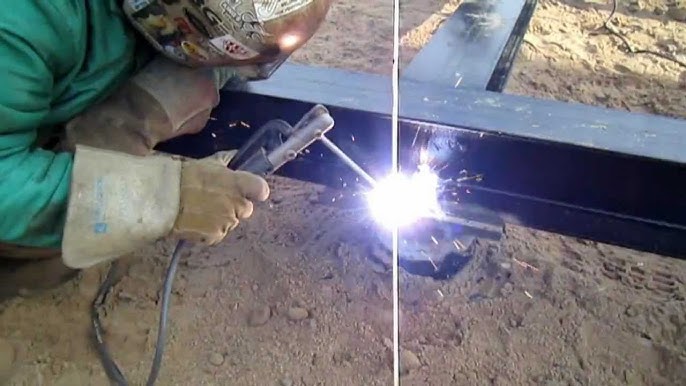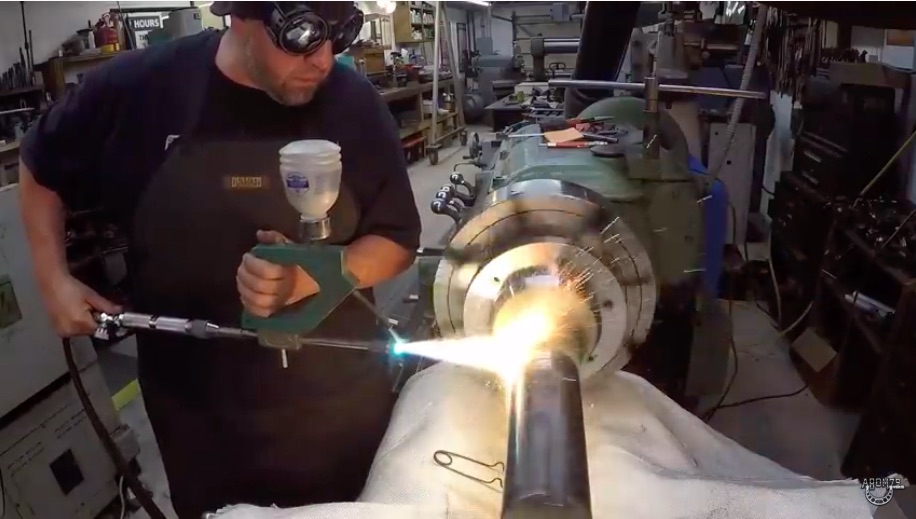Usual Welding Repair Work Issues and Just How to Address Them Efficiently
Welding repairs often encounter a variety of concerns that can threaten the integrity of the final item. Usual issues include poor infiltration, porosity, and misalignment, to name a few. Each problem presents special obstacles that need details strategies for resolution. Understanding these issues is essential for welders intending to improve their results and abilities. This conversation will certainly check out these usual welding fixing issues and effective methods to resolve them.
Insufficient Infiltration
Insufficient infiltration occurs when the weld metal stops working to fully fuse with the base material, leading to weak joints and potential architectural failures. This problem frequently comes from insufficient warmth input, inaccurate electrode angle, or inappropriate welding rate. Welders might encounter poor infiltration as a result of a miscalculation of the required criteria for a certain material density or kind. Furthermore, contamination on the base material's surface can impede efficient bonding, aggravating the issue. To address poor penetration, welders must ensure suitable setups on their equipment and keep a tidy work surface area. Routine inspection of welds is recommended to identify any type of shortages early, permitting timely improvements and the prevention of jeopardized architectural stability in welded assemblies.
Porosity
Porosity is a typical problem in welded joints that materializes as tiny gas bubbles trapped within the weld metal. This defect can endanger the stability of the weld, bring about reduced strength and possible failing under stress and anxiety. Montana Mobile Welding and Repair Belgrade Fabrication. Porosity normally emerges from contamination, wetness, or inappropriate welding techniques, which allow gases to leave right into the liquified weld pool. To resolve porosity, welders should guarantee appropriate surface preparation, preserve a clean workplace, and use appropriate welding parameters. Furthermore, picking the ideal filler product and securing gas can alleviate gas entrapment. Regular inspection and testing of welds can help recognize porosity early, assuring prompt rehabilitative actions are taken, consequently protecting the high quality and dependability of the welded structure
Imbalance
Imbalance in welding can develop from different elements, consisting of improper configuration and thermal growth. Understanding the origin is essential for effective resolution. Numerous correction methods are offered to realign components and guarantee structural stability.
Reasons of Imbalance
Welding misalignment often comes from a variety of underlying concerns that can jeopardize structural stability. One key cause is inappropriate fit-up of elements prior to welding, which can result in voids and uneven surfaces. Variants in thermal expansion throughout the welding procedure can also result in distortion, specifically if the materials being signed up with have different coefficients of growth. In addition, inadequate clamping and fixturing might stop working to hold components firmly in place, leading to movement throughout welding. Poorly kept equipment, consisting of welding makers and devices, might introduce disparities in the weld bead, additional adding to imbalance. Operator error, stemming from inadequate training or experience, can also play a considerable function in producing misaligned welds.

Correction Strategies Readily Available
Resolving imbalance efficiently calls for a combination of restorative techniques customized to the details concerns handy. One usual method is using components or jigs to hold components in the right position during welding, ensuring constant positioning. Additionally, pre-heating the products can help decrease distortion and boost fit-up. For substantial misalignment, mechanical realignment techniques, such as utilizing hydraulic jacks or clamps, can be employed to remedy the position prior to welding. Post-weld heat treatment might also be needed to ease stresses triggered by misalignment. Lastly, cautious examination and change throughout the configuration stage can protect against misalignment problems from coming to be considerable problems, promoting a smoother welding procedure and enhancing total structural honesty.
Distortion
Distortion is a typical difficulty in welding that can develop from numerous variables, consisting of uneven cooling and heating. Understanding the root causes of distortion is necessary for applying reliable prevention techniques. Addressing this issue not just enhances architectural honesty but likewise enhances the general quality of the weld.
Causes of Distortion
When subjected to the extreme warmth of welding, products typically undertake modifications that can bring about distortion. This sensation primarily occurs from thermal development and tightening during the welding procedure. As the weld location warms up, the product broadens; upon cooling, it contracts, which can develop inner stresses. Furthermore, unequal heating throughout a workpiece can exacerbate these stress and anxieties, leading to bending or bending. The kind of material additionally plays a substantial duty; steels with differing thermal conductivity and coefficients of expansion may respond in a different way, leading to unforeseeable distortions. Inadequate joint design and insufficient fixturing address can add to misalignment throughout welding, enhancing the likelihood of distortion. Comprehending these causes is vital for effective welding repair and prevention strategies.
Avoidance Techniques
Efficient avoidance strategies for distortion throughout welding emphasis on controlling warmth input and guaranteeing proper joint style. Preserving a consistent warmth input assists to reduce thermal growth and tightening, which can bring about distortion. Utilizing strategies such as pre-heating home the work surface can likewise reduce the temperature level gradient, promoting uniform heating. Additionally, selecting suitable joint styles, such as T-joints or lap joints, can improve stability and decrease tension focus. Applying appropriate fixturing to secure the workpieces in area further aids in maintaining positioning throughout the welding process. Staggered welding series can distribute heat more evenly, protecting against local distortion. By using these strategies, welders can greatly reduce the possibility of distortion and boost the overall high quality of their welds.
Splitting
Splitting is a common problem encountered in welding repair services, commonly resulting from various variables such as improper air conditioning rates, material choice, or inadequate joint prep work. The incident of fractures can considerably compromise the stability of the weld, leading to prospective failures throughout operation. To address this issue, welders have to first assess the root triggers, making sure that materials work and properly chosen for the specific application. Additionally, managing the air conditioning price during the welding procedure is vital; rapid cooling can induce stress and anxiety and lead to splitting. Appropriate joint layout and preparation additionally contribute to minimizing the risk. Carrying out these techniques can boost weld high quality and sturdiness, ultimately lowering the possibility of fracturing in completed weldments.

Insufficient Fusion
A considerable issue in welding repair work is insufficient fusion, which takes place when the weld metal does not properly bond with the base material or previous weld passes - Montana Mobile Welding and Repair Fabrication. This issue can cause weaknesses in the joint, possibly compromising the integrity of the bonded framework. Variables adding to insufficient combination consist of not enough warm additional info input, improper welding method, and contamination of the surfaces being signed up with. To address this concern successfully, welders should assure proper pre-weld cleansing and surface area preparation, as well as change their welding specifications to attain adequate penetration and fusion. Regular evaluation throughout the welding process can likewise help recognize incomplete fusion early, allowing for timely rehabilitative actions to improve the overall high quality of the weld
Overheating
While welding repair services can improve structural honesty, overheating presents a substantial difficulty that can cause material destruction. Excessive warmth during welding can change the mechanical properties of steels, leading to decreased stamina, enhanced brittleness, and warping. This sensation is particularly essential in high-stress applications where structural dependability is vital. Recognizing getting too hot can entail aesthetic inspections for discoloration or distortion, as well as keeping track of temperature throughout the welding process. To reduce the dangers linked with getting too hot, welders need to employ appropriate methods, such as controlling heat input, changing travel rate, and utilizing suitable filler products. In addition, carrying out pre- and post-weld warm treatments can aid restore product residential or commercial properties and enhance the general high quality of the repair, making sure lasting efficiency and safety and security.
Frequently Asked Concerns
What Are the Typical Indicators of a Welding Problem?

Exactly How Can I Evaluate My Welds for Quality?
To check welds for high quality, one can make use of aesthetic evaluations, ultrasonic screening, and radiographic approaches. Each method guarantees architectural stability, recognizes defects, and confirms adherence to defined standards, eventually improving the dependability of the bonded joints.
What Safety Preventative Measures Should I Take While Welding?
When welding, one must focus on safety by putting on proper individual protective tools, ensuring appropriate ventilation, securing flammable products away, preserving a tidy work area, and recognizing environments to stop injuries and accidents.
Can I Fix a Weld Without Redoing the Entire Joint?
Fixing a weld without renovating the entire joint is feasible, relying on the damages (Montana Mobile Welding and Repair Welding). Techniques such as grinding, including filler product, or using a welding process can successfully address details flaws while maintaining the surrounding framework
What Devices Are Vital for Effective Welding Fixes?
Important devices for efficient welding repair work consist of a welding equipment, cable brush, grinder, protective gear, clamps, and filler products. Each tool plays an essential function in making sure top quality and safety and security during the fixing process. Porosity generally emerges from contamination, moisture, or improper welding strategies, which allow gases to escape into the liquified weld pool. Inadequately maintained devices, consisting of welding equipments and tools, might introduce disparities in the weld grain, additional contributing to misalignment. When subjected to the intense warmth of welding, products frequently undertake changes that can lead to distortion. Fracturing is a typical problem experienced in welding fixings, frequently resulting from different elements such as inappropriate cooling prices, material option, or inadequate joint prep work. A substantial concern in welding repair work is insufficient blend, which happens when the weld steel does not effectively bond with the base product or previous weld passes.
Comments on “Best ways to deal with warping in Montana Mobile Welding and Repair Belgrade”